How to deal with cranky child
10 Ways To Calm A Cranky Kid, Quickly
Many can agree that caring for a child is no easy task. Between making sure they don’t get into trouble and teaching them what is right and wrong, there is a lot to childcare. However, people have all kinds of experiences with their children. One experience that many parents can say they’ve shared is dealing with a cranky child.
Related: 10 Ways To Tame A Temper Tantrum
For a lot of people, a cranky child could range from loud crying to full-on tantrums. How does one deal with a cranky child without getting upset themselves? Here are some ten tips on how to calm down a cranky child.
10/10 Understand What’s Wrong
A good first step is to understand why your child is upset. There could be many reasons that they are cranky. It’s always good to get to the root of the problem before you can find a solution. This also helps establish yourself as the problem solver to your child. Should they have a problem in the future, it is more likely they will look to you for help.
RELATED: 10 Moments As A Mom That Will Make You Feel Like A Failure (& How To Understand You’re Not)
What’s more, it helps build communication between the two of you. More than this, it will help them expand their emotional vocabulary. Finding the problem will also help your child work out their feelings and understand them.
Another initial step to calming your child is making eye contact with them. The importance of this tip is to ensure that your child is paying attention to you. It also helps in showing the child that you are paying attention to them as well. When you don’t establish eye contact, there is a high chance that your child won’t listen to you. If you don’t catch their attention or don’t show them proper attention, then they are lewwewew4ss likely to calm down. Eye contact can also work as a non-verbal way to show your child that you are listening to them, showing that they are important.
8/10 Don’t Get Upset Yourself
When you see a child upset, it’s hard not to get upset yourself. However, a child can be rather sensitive to their parent’s moods. Should you show negative emotion yourself, your child may not respond well to it. Additionally, they take emotional cues from you. By showing them how you handle your own temper, you help them develop how they handle their own tempers in the future. If you do get upset, it’s best to try and express yourself calmly to let them understand and even apologize if you let your anger out inappropriately. Basically, this is a good building block in developing your child’s temperament.
However, a child can be rather sensitive to their parent’s moods. Should you show negative emotion yourself, your child may not respond well to it. Additionally, they take emotional cues from you. By showing them how you handle your own temper, you help them develop how they handle their own tempers in the future. If you do get upset, it’s best to try and express yourself calmly to let them understand and even apologize if you let your anger out inappropriately. Basically, this is a good building block in developing your child’s temperament.
7/10 Acknowledge Their Feelings
A child may not always be able to verbally say what’s wrong and they may honestly not know themselves. They may be too young to properly say what’s upsetting them. Or, they might be too upset to say anything at all. That’s why physically expressing yourself can also help. By mimicking their body language, expressing through hand gestures and using facial expressions, it gives them a sense of being understood. It’s a good way to help relieve their frustration and catch their attention. Once you catch their attention, you can work out why they are upset and find a way around it.
It’s a good way to help relieve their frustration and catch their attention. Once you catch their attention, you can work out why they are upset and find a way around it.
6/10 Use A Feelings Chart
This is another good way for your child to express themselves if they can’t verbally say it. A feelings chart is basically a chart showing a line of emotions ranging from happy to sad or mad. It’s a good communication tool between a parent and a child that isn’t able to properly talk yet. When your child gets cranky, you can take out the chart and ask them to point out what picture suits what they are feeling. It encourages the child to show what they are feeling and make them think as well. Rather than throwing a temper tantrum, they can stop by looking through the chart.
5/10 Have Them Learn Deep Breathing
Deep breathing has been shown as a technique to help kids learn how to calm themselves down. Show them how to do so by placing their hand on your chest and making them do the same. Demonstrate deep breathing. You can make them enjoy the exercise by making it fun for them.
Demonstrate deep breathing. You can make them enjoy the exercise by making it fun for them.
RELATED: 10 Hilarious Parenting Movie Quotes Every New Parent Will Understand
You could make a sort of game to practice or have them repeat to you what they learned. That way, you keep their attention and have them learn something for themselves. When they succeed, you can reward them with lots of affection. This can also be a way to teach them to take a step back and keep calm.
4/10 Teach Them To See Another View
In other words, have your child learn to empathize with others. With how upset they get, children often don’t see how they are affecting others with their temper. It would be a good time to teach them to see things from another person’s perspective. Ask them how they would feel if they saw someone throwing a tantrum, screaming and kicking. If they have siblings, they could be used as samples as well. This will engage them in thinking and have them distracted from their tantrums. In short, distracting your child by having them think about something else makes for a good calming method.
In short, distracting your child by having them think about something else makes for a good calming method.
3/10 Choose The Right Time To Step In
Sometimes, it’s ok to let your child let out a little steam. You can’t always jump in and have them calm down. Chances are, jumping in early might make them more upset. This helps them feel more in control of the situation and show it’s ok to be upset sometimes. You can still encourage them from the sidelines and ascertain when it’s right to move in. This is another way to let them overcome a challenge but also know that you’re there for them. You can also utilize this to help them learn how to deal with things by themselves when they are upset.
2/10 Reward And Acknowledge Good Behavior
At a young age, it’s important to teach your child the meaning of consequences. The same goes for the opposite, if they do good, they get something good in return. It will help your child learn to continue good behavior and learn when to and not to do certain things. You should also be varied and careful with your rewards. Repetition can only go so far with children. If you reward them every time they do something good, they may only demonstrate good behavior and expect something in return all the time. That said, rewards make for good motivators and incentives to not get cranky.
You should also be varied and careful with your rewards. Repetition can only go so far with children. If you reward them every time they do something good, they may only demonstrate good behavior and expect something in return all the time. That said, rewards make for good motivators and incentives to not get cranky.
1/10 Manage Bad Behavior And Time Outs
As said, it’s important for your child to learn consequences for their actions. With bad behavior such as temper tantrums, if escalated, should be punished. The most viable punishment would be a timeout. By leaving them alone when they misbehave, you give them an awareness of when they are doing something wrong. It may be hard to leave them alone when they upset, but when implemented correctly, a timeout is rather effective. Make sure to limit time outs to a minute or two. Time outs should also be used for certain bad behavior and not all moments a child acts out.
NEXT: 10 Spooky Things Kids Have Said That Gave Their Parents Chills
How to take care of a cranky, angry toddler without losing your cool
Back to Top
Now Reading:
How to take care of a cranky, angry toddler without losing your c.
 ..
..Share fbsharetwsharepinshareComments (0)
TIMESOFINDIA.COM | Last updated on -Jun 11, 2020, 16:40 ISTShare fbsharetwsharepinshare
Comments (0)- close
01/7Angry toddler? Let us tell you what to do
Someone once defined a toddler as a pint-sized dictator and we sincerely believe it is the most accurate description of a lovable creature with just a hint of mood swings. If you are nodding your head in disbelief, wait till you parent one. This is because even as a parent, it is tough to understand what your little one really wants or gets frustrated and irritated with.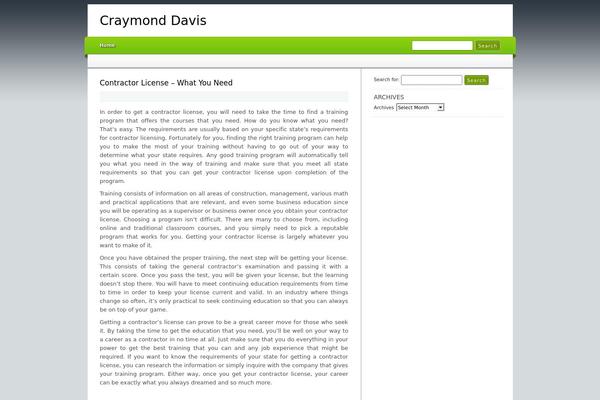
When we sit down to think about it. It actually makes a lot of sense. Imagine having so much to say and communicate with the adults who constantly hover around you, but not having an adequate vocabulary to express. It will definitely frustrate a mature adult to no ends as well. While yelling and throwing tantrums are common with these adorable tiny humans, there are certain things parents can do to shape their child’s behaviour in a better manner:
readmore
02/7Stay calm and composed
It may seem like the most redundant advice ever, but hear us out first. If you do not lose your cool, even when your child is yelling at the top of her voice, you set an example for your little one. Even though it is easy to lose control, staying calm helps you understand what your child is going through in a much better manner.
readmore
03/7Communicate with your child
Instead of using threats of negative reinforcements, try to understand what they are asking for. Remember, their demands may not make sense, which is why you have to explain it to them how yelling, howling and screaming is unacceptable. After they have calmed down, teach them a better way to communicate their needs.
Remember, their demands may not make sense, which is why you have to explain it to them how yelling, howling and screaming is unacceptable. After they have calmed down, teach them a better way to communicate their needs.
readmore
04/7Use healthy distractions
There are times when your toddler will refuse to listen and continue crying his/her lungs out. This is why it is crucial to find alternative ways to calm your child. Remember, alternative approaches and healthy distractions do not include bribing them. For example, instead of giving your child a bar of chocolate or your smartphone, you can try new activities together or play interesting games.
readmore
05/7Understand when the conversation is important
It is important to remember that distractions won’t work if your child has hurt someone or done something which he/she shouldn’t have. In these scenarios, it is essential to make your little one understand what they have done wrong, instead of distracting them with toys or songs.
In these scenarios, it is essential to make your little one understand what they have done wrong, instead of distracting them with toys or songs.
readmore
06/7Do not cave into tempers
If your little one is wailing for a particular toy and your provide him with the same to pacify them immediately, he may learn that tantrums are an effective way of getting everything. Again, it is important to understand the difference between providing what your child needs and pampering them so they don’t cry.
readmore
07/7Let them experience the emotions
Instead of rushing to your little one, every time he cries or grumbles, you can try giving him space to get upset by living him alone for a while. After giving your little one a break, find an activity to interact with him or and play or read a story together.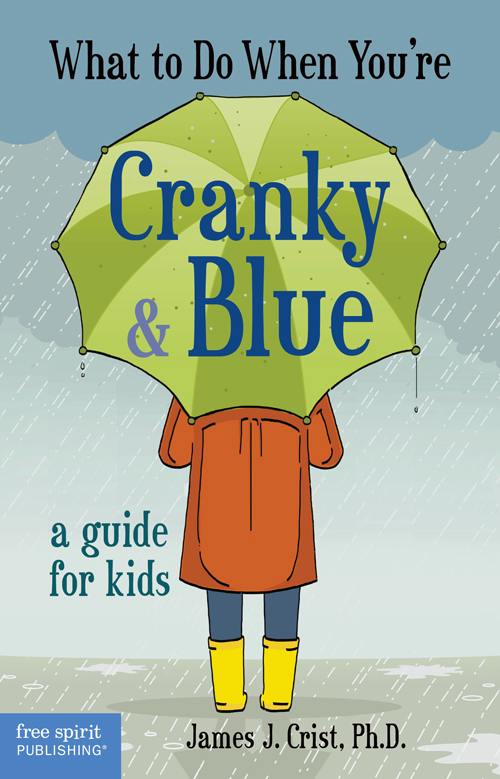
readmore
How to respond to the whims of children
home
Parents
How to raise a child?
How to respond to the whims of children
- Tags:
- Parent lecture hall
- 1-3 years
- 3-7 years
- 7-12 years old
- baby whims
Children's whims worry many parents: they occur suddenly against the background of a completely prosperous behavior of the child. Most moms and dads are familiar with the situation when generally calm children begin to act up for any reason. And the older the child becomes, the more reasons for tantrums he may have: they didn’t buy a toy, like other children, they didn’t give him sweets, they went to play on the wrong playground. In order not to form a habit in a child to get what they want with the help of crying and screaming, parents should figure out what are the reasons for children's whims. nine0003
nine0003
Each age has its own whims
The propensity to whims is associated with the age and psychophysical characteristics of children. Most often whims appear in early childhood. Moreover, the younger the child, the brighter he has such manifestations.
Capriciousness in children under two years old
At the age of two years, whimsical childhood may be caused by overwork, change of scenery or illness of the child. But they are easy to avoid. To do this, parents need to properly organize the daily routine of the child and make sure that he feels comfortable and safe. nine0003
Whims in children from two to five years old
In the period from two to five years, the child begins to actively express his disagreement with the actions of his parents and tries to force them to fulfill their own desires. Adults should not establish dictatorship and put pressure on the baby with the authority of the elder. Such relationships with children are considered the most unfavorable for the formation of personality. According to research, an effective parenting style is cooperation, which is based on the principle of bringing all family members together. You can learn about what parenting styles exist by reading the article “Problems of Education”. nine0003
According to research, an effective parenting style is cooperation, which is based on the principle of bringing all family members together. You can learn about what parenting styles exist by reading the article “Problems of Education”. nine0003
Whims in children after the age of five
Whims in children aged five and over are the result of an established habit to achieve one's own goal not by dialogue, but by crying and crying. Recommendations to parents in this case - first of all, ignore attempts to manipulate yourself. Invite the child to think about whether he really needs what he asks you for. If his request cannot be fulfilled, then explain to him why. Your refusal will not be taken painfully if the child understands why he cannot get what he wants. nine0003
How to deal with a child's whims: 7 tips for parents
Many parents do not know how to respond to children's whims and give vent to emotions. The child psychologist of the portal "I am a parent" gives advice on how to behave to moms and dads when a child is naughty.
1. Remain calm in any situation
In any situation, try to remain calm. Do not yell at the child: find a way to get your point across to him differently. Explain why you won't do what he wants. If the child does not respond to your arguments, wait until he calms down and can accept your words. In order to bring the child out of hysterics, hug him tightly and hold him in your arms for a while. Tell your child that you love him even in those moments when he is angry, but it upsets you if he screams loudly and throws himself on the floor. nine0003
2. Be patient
It is better to wait out a tantrum in a public place without reacting to the child's behavior and the comments of others. If possible, take the screaming baby to the car or take it out of the store to the street. When he calms down, calmly discuss the situation with him and explain that it is unacceptable to behave in the presence of strangers.
3. Keep your word
If you said no, stick to this no matter how much you feel sorry for your baby. Many parents are ready to allow their children anything, as long as they stop screaming. By doing so, they reinforce the child's undesirable behavior. Psychologists advise all family members to adhere to the same parenting strategy. This will help prevent children's whims at the stage of their inception. nine0003
Many parents are ready to allow their children anything, as long as they stop screaming. By doing so, they reinforce the child's undesirable behavior. Psychologists advise all family members to adhere to the same parenting strategy. This will help prevent children's whims at the stage of their inception. nine0003
4. Use reasonable arguments
Try to "negotiate" with the child. Children over the age of four already understand the connection between their bad behavior and subsequent punishment. To do this, set clear rules for your child. For example, “if you don’t stop screaming, you will be left without cartoons.”
5. Switch the child's attention
Do not punish your child for whims. It is wiser to divert his attention to something else. For example, asking to find some product on the shelves or offering to carry a basket in a supermarket. The need to perform any action will help distract the child from his whims and desire to insist on his own. nine0003
6.
 Prevent children's whims
Prevent children's whims Try to prevent children's whims. Avoid situations where the likelihood of a tantrum in a child is high. So, parents should not go to the store with a hungry and tired child if they do not want to cause a new explosion of emotions.
7. Do not leave the child alone
If the child does not make contact, do not leave him alone in a stressful state. Excessive guardianship of the baby in this situation is also devoid of common sense. After all, it is by whims that children protest against parental supervision and demonstrate a desire to be independent. So just keep going about your business. Then the child will know that you are always there, and your decision is final. nine0003
Svetlana Koroleva, an actress, TV presenter and mother of three children, told the portal “I am a Parent” about how children cope with their whims in a large family.
Ekaterina Kushnir
Take a psychological test on the portal "I am a parent" and find out if you spoil your child too.
Do you spoil your child?
A very capricious child: what parents should do - explains the psychologist - Parents.ru
Education
- Photo
- milorad kravic/Getty Images/E+
practical psychologist
A child's refusal to do something and his denial of obvious things often makes parents angry: "Why has the child become capricious?!" Behind the children's "no", "I don't want" and "I won't" it is important to discern in time something more important than simple stubbornness.
“Children's protest period begins around the age of 2–2.5 years and is associated with one of the most important stages in their development,” explains psychologist Alena Kazantseva. - In pedagogical literature, it is referred to as the "crisis of negativism" or "crisis of three years. " The main task of this stage is autonomy, psychological separation from the mother, the manifestation of the child's own "I". Before this period, he perceives himself and his mother as a whole, as "we". He can talk about himself in the third person: for example: "Petya went for a walk today." And then the child, as it were, makes a leap to a new level of development. The new "I" requires building new relationships with loved ones who are not always ready for this and sometimes actively resist. The kid, feeling himself a separate and independent person, begins to protest against the established rules. And since he does not have a sufficient set of tools and well-developed speech to indicate his new position, he uses everything that he has already learned and that, in his experience, can influence conservative parents: screaming, tears, whims, falling to the floor, damaging property. The situation is aggravated by the authoritarian way of upbringing and the unwillingness of parents to rebuild their system of relations with the child.
" The main task of this stage is autonomy, psychological separation from the mother, the manifestation of the child's own "I". Before this period, he perceives himself and his mother as a whole, as "we". He can talk about himself in the third person: for example: "Petya went for a walk today." And then the child, as it were, makes a leap to a new level of development. The new "I" requires building new relationships with loved ones who are not always ready for this and sometimes actively resist. The kid, feeling himself a separate and independent person, begins to protest against the established rules. And since he does not have a sufficient set of tools and well-developed speech to indicate his new position, he uses everything that he has already learned and that, in his experience, can influence conservative parents: screaming, tears, whims, falling to the floor, damaging property. The situation is aggravated by the authoritarian way of upbringing and the unwillingness of parents to rebuild their system of relations with the child.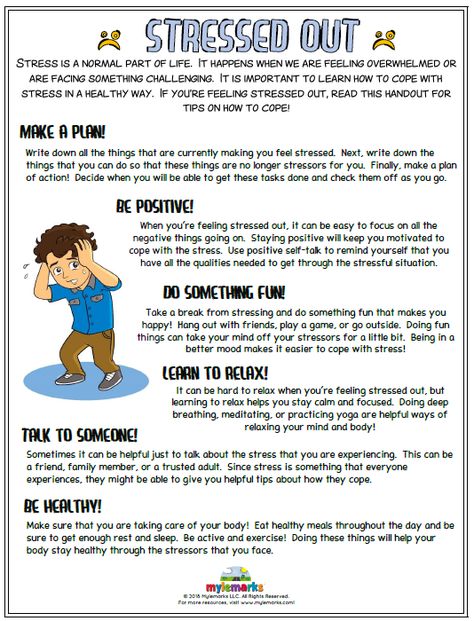 nine0003
nine0003
- Photo
- Getty Images
Where does "I don't want to!"
"Spoiled, he roams around" - they immediately find an explanation for the grandmother's childish obstinacy. The modern rhythm of life dictates its own rules, and sometimes it’s really easier for parents to follow the lead of the child in order to achieve the result: “Put on whatever you want, just go already!”. But, it would seem, a capricious child is not always such in reality, and all children's “I don’t want to” are different. nine0003
Here are some reasons why a previously meek child became very capricious.
-
Strength test. A child's attempt to move away from his parents is inevitably connected with the desire to test the limits of his own capabilities, the strength of established rules and the strength of the authority of elders. If you told your baby that it is customary to eat at the table in the kitchen, at one fine moment he may declare his desire to eat soup only in the living room in front of the TV.
 Not because he does not want to break away from watching his favorite cartoon, but in order to test how strong you and your prohibitions are. nine0003
Not because he does not want to break away from watching his favorite cartoon, but in order to test how strong you and your prohibitions are. nine0003 -
Consequence of overprotection. In an effort to protect a precious child from life's turmoil, it is important not to cross the line beyond which hyperprotection begins. If you carried your baby in a stroller until the age of three, fed him with a spoon and did not let go a single step, it is natural that your first attempts to appeal to his independence will be met with hostility.
-
Attracting attention. As a rule, by the age of two, children already know well in what situations parental interest is ensured for them. If it so happened that you give your baby your attention and communication only when he does something wrong or unacceptable. The child became very moody because he realized that a loud “I don’t want to” can be a great way to get noticed at last. nine0003
-
Fear of novelty.
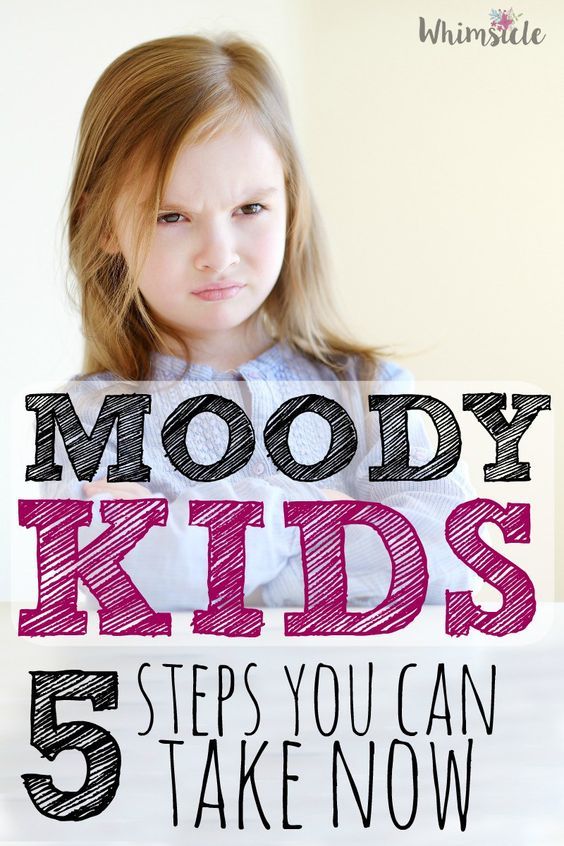 Hypersensitive, emotion-prone babies who are easily aroused and burst into tears, innovations that are inevitable in life may not attract, but frighten. "Moving" to a new crib is met with a categorical "no"? It's simple: in the old one he feels safe.
Hypersensitive, emotion-prone babies who are easily aroused and burst into tears, innovations that are inevitable in life may not attract, but frighten. "Moving" to a new crib is met with a categorical "no"? It's simple: in the old one he feels safe. -
Simple failure. He also has the right to exist. This should make you happy, not upset. When a child begins to form his own view of the world, he has his own tastes, interests, passions and preferences. If what they offer doesn't match, you may be rejected. “I won’t wear a red T-shirt, I want a green one”, “I won’t drink tomato juice, I want a peach one” - perhaps this is not a game on your nerves, but your baby really does not like the color red and tomato juice. Analyze several such situations and draw conclusions. nine0003
Think about whether the child has really become moody? Maybe the childish “I don’t want to” is a reaction to your exaggerated demands? If the baby not only refuses to do something, but also looks confused and depressed at the same time, think about whether this is really so “elementary” for him.
- Photo
- Santiago Urquijo/Getty Images/Moment RF
Dealing with whims
Dealing with childhood denial can be tricky. Especially if the baby is stubborn, and you, for example, are late. The circle closes: the refusal of the child - your irritation - his tears - your irritation. “Believe me, it’s not so much important for a child to defend his rights, but to go through the process of defending them, so you don’t need to actively fight the children’s“ I don’t want ”! - explains Alena Kazantseva. “Your main task is to form a new code of rules for communicating with the baby, as well as teach him to express his opinion and state his needs in a more effective, convenient and “adult” way.” nine0003
Very often one can hear complaints from parents: “The child is a year old, very capricious, for all requests, demands - continuous refusals.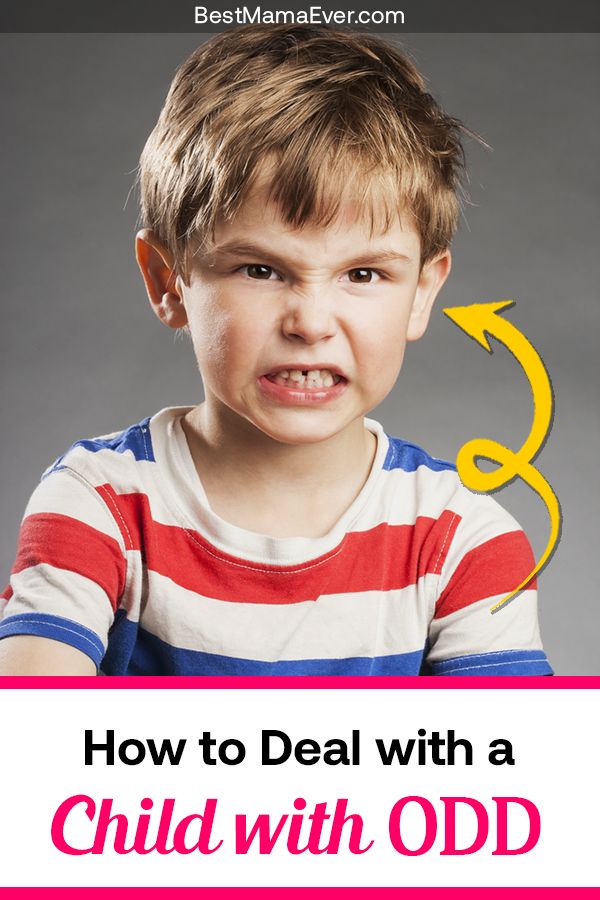 ” How to deal with the "negochuhoy"? Here are a few rules that will help both you and him to overcome the period of this "crisis" age.
” How to deal with the "negochuhoy"? Here are a few rules that will help both you and him to overcome the period of this "crisis" age.
-
Do a soul-searching. Review your strategies for interacting with your baby, requirements and prohibitions. Perhaps some of them he has already outgrown?
-
Form a clear “no” system taking into account age. nine0087 There should be few such “no” (for example, 5–7), but these should be unshakable rules. If something is impossible on weekdays, then you should not make exceptions on weekends, as well as during the departure of the parents or the illness of the child. If mom forbids, the same ban must be confirmed by both dad and grandmother.
-
Suggest options. Of course, day after day, hourly, following the instructions is easy, but boring. Admit it, you yourself would rebel sooner or later. Put the baby in a situation of simple choice (“Shall we take a red ball or a green one for a walk?”, “What do you want to wear yourself - a jacket or boots?”), Ask his opinion and advice.
 If the baby stubbornly refuses something, ask him what he wants. nine0003
If the baby stubbornly refuses something, ask him what he wants. nine0003 -
Cultivate independence. Even the most capricious child is not at all helpless! Try not to do for him what he can handle on his own, even despite the time limit. Add 15 minutes to the collection for a walk and instruct him to pull on his pants, fasten the buttons on his jacket, etc. If you do it for him over and over again, later at one fine moment, being late for kindergarten, you will hear the natural “I don’t want to”. In fact, why - mom will do everything herself. nine0003
-
Remember self-control. Don't shout! It makes no sense to raise your voice to the baby at the moment when he refuses to do something - you will only demonstrate your helplessness to him and confirm the correctness of his way of influencing you. To calm down quickly, evaluate the courage of your own child: any rebellion requires a lot of strength and determination from him, because he sees how he upsets you.

-
Be a psychologist. Child year - has become capricious? Childish whims are not easy to endure. And if at home you are overtaken by loud crying and rolling on the floor, just go to another room and start defiantly playing with your child's toys (singing, dancing, etc.). So you switch the attention of the crumbs and give him the opportunity to calm down, and a little later you can explain under what conditions you will satisfy his request. When you encounter a child's ugly behavior in a public place, first of all, allow yourself to ignore the opinion of gossips who may say (or think) what a bad mother you are. Calmly take the child and, firmly fixing the shoulders and arms, take him around the corner, away from the annoying environment. nine0003
-
Analyze. Remember that behind every whim there is an unfulfilled childish need. And there are no bad needs at such a tender age, there are only destructive ways of fulfilling them.

Believe me, a naughty child at one year old, a naughty child at 2 years old and even a naughty child at 3 years old is quite normal. But if the "period of negativism" dragged on to 5-6 years, most likely, this means that the main tasks of the period of growing up were not solved in time. Contact a psychologist who will help you figure out why this happened and give recommendations on how to interact with the baby. nine0003
- Photo
- Anchalee Yates/EyeEm/Getty Images
How to outsmart a naughty child
Here are some non-standard ways to deal with children's "I don't want to".
-
Help from a friend. When the kid ignores your appeals, try to act through a figurehead. Take his favorite toy (it can be either a soft animal or a car) and use it to “speak” to him: “Hi! I'm very sad.
 Let's go for a walk?" nine0003
Let's go for a walk?" nine0003 -
Theater of the absurd. If an attack of negativism rolled over the crumbs and you know that he will turn any of your requests inside out, act by the contrary method. Would you like to feed your little one fish? Tell him he can't do it! Should I turn right on the street? Say you're going left.
-
Feast of disobedience. Being always correct and obedient is a rather difficult task. During the day, arrange one or more “holiday” hours for your “unwanted” person, when he can do everything that is usually forbidden (within reason, of course). Don't want to get dressed? Please! Would you like candy instead of soup? To health! But set a mandatory condition - the rest of the time the little one must obey you. nine0003
-
Humorous. If the situation is hopeless (whether you like it or not, but you need to see a doctor), overcome children's negative emotions in the literal sense.













